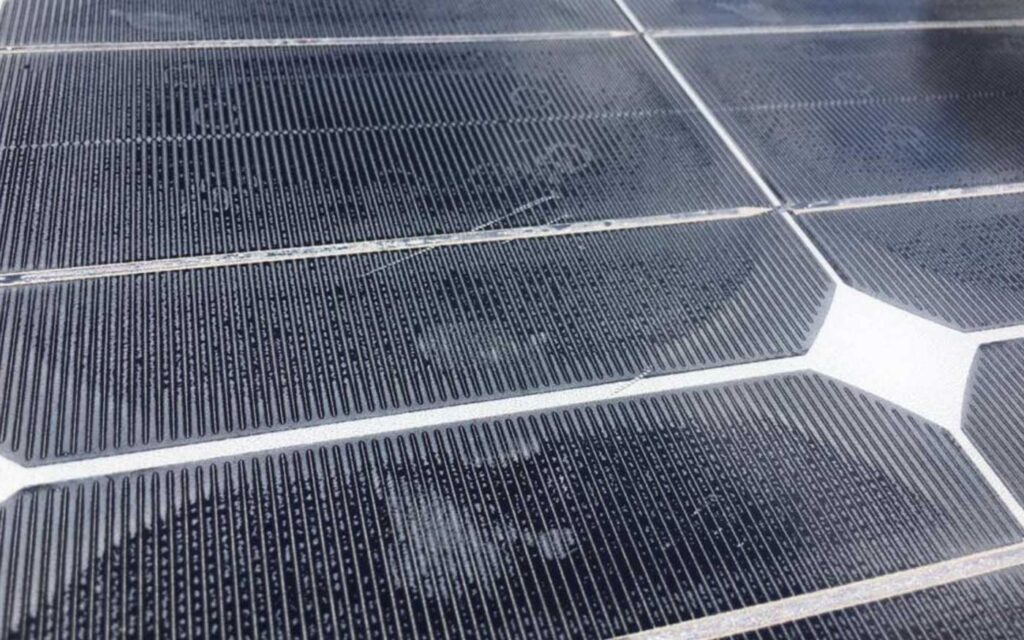Solar panel delamination refers to the separation or detachment of layers within a solar panel’s construction. This issue can compromise the performance and longevity of the panels, leading to reduced energy output and potential long-term damage. Delamination can occur due to various factors, including:
- Moisture Ingress: One of the most common causes of solar panel delamination is the infiltration of moisture or water vapor into the panel’s layers. Over time, exposure to moisture can weaken the adhesives that hold the layers together, causing them to separate.
- Thermal Cycling: Solar panels are exposed to a wide range of temperatures throughout their lifetime. Repeated cycles of heating and cooling can lead to the expansion and contraction of materials within the panel, putting stress on the adhesive bonds and causing delamination.
- Manufacturing Defects: Poor manufacturing practices, including inadequate bonding or curing of adhesive materials during panel assembly, can result in weak bonds between layers. These weak points can lead to delamination over time.
- UV Radiation and Weathering: Solar panels are exposed to sunlight and ultraviolet (UV) radiation, which can break down the materials and adhesives used in panel construction. Overexposure to UV radiation can accelerate the degradation of adhesive bonds and contribute to delamination.
- Mechanical Stress: Physical stresses such as impacts, vibrations, or improper handling during transportation, installation, or maintenance can lead to delamination. These stresses can cause layers to separate or weaken adhesive bonds.
- Quality of Materials: The quality of the materials used in solar panel construction, including adhesives and encapsulants, can affect the panel’s resistance to delamination. Inferior or substandard materials may be more prone to degradation and separation.
- Age and Wear: Solar panels are designed to last for decades, but over time, the materials may degrade due to various environmental factors. As panels age, the risk of delamination can increase.
- Environmental Conditions: Panels located in regions with extreme weather conditions, such as frequent freeze-thaw cycles or high humidity, are more susceptible to delamination due to the stresses imposed on the panel materials.
To mitigate the risk of solar panel delamination, manufacturers typically employ high-quality materials, proper manufacturing techniques, and rigorous quality control measures during the production process. Additionally, proper installation practices and regular maintenance can help minimize the impact of environmental factors that contribute to delamination. If delamination is observed, it’s essential to address the issue promptly to prevent further deterioration and ensure the continued performance of the solar panel system.


